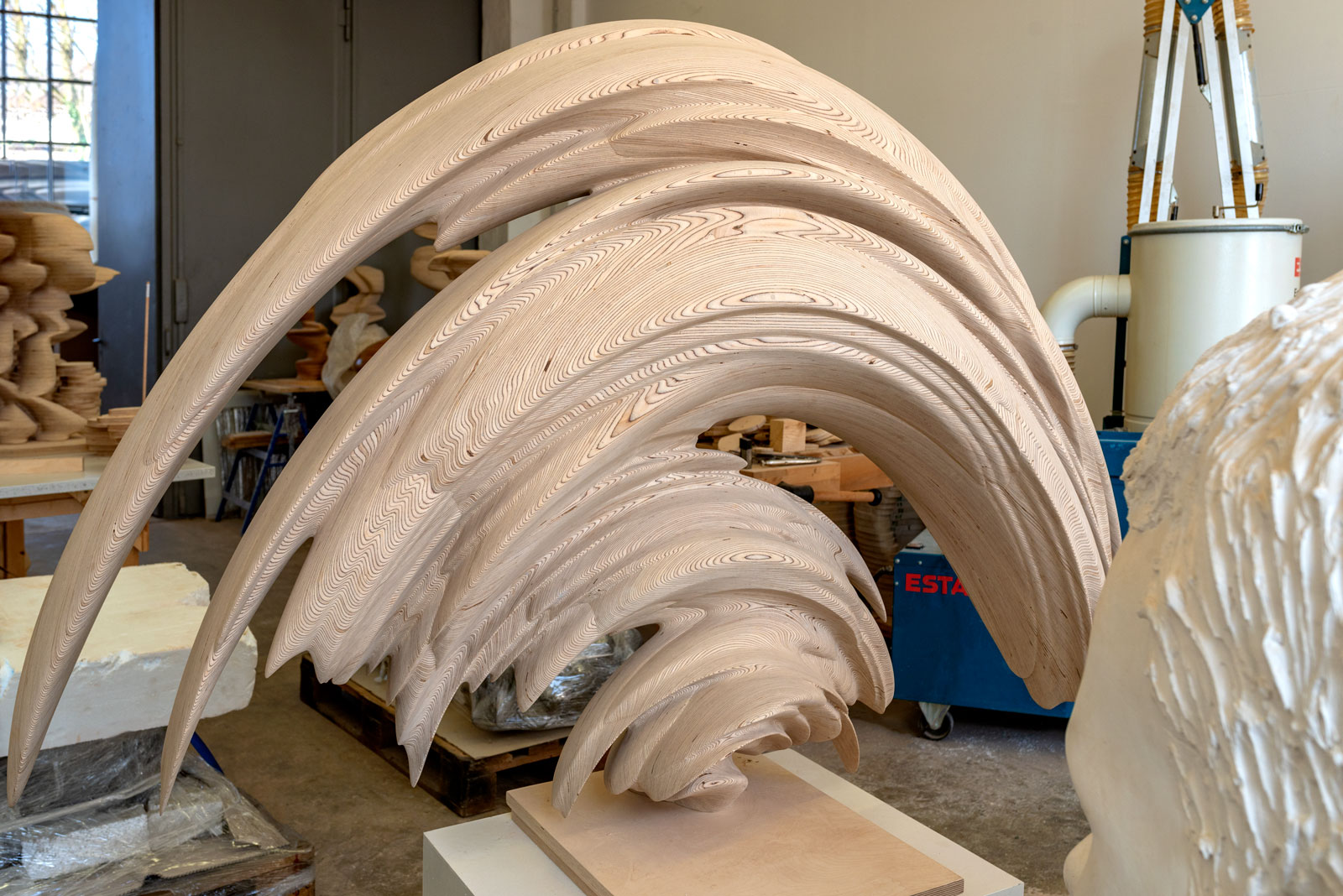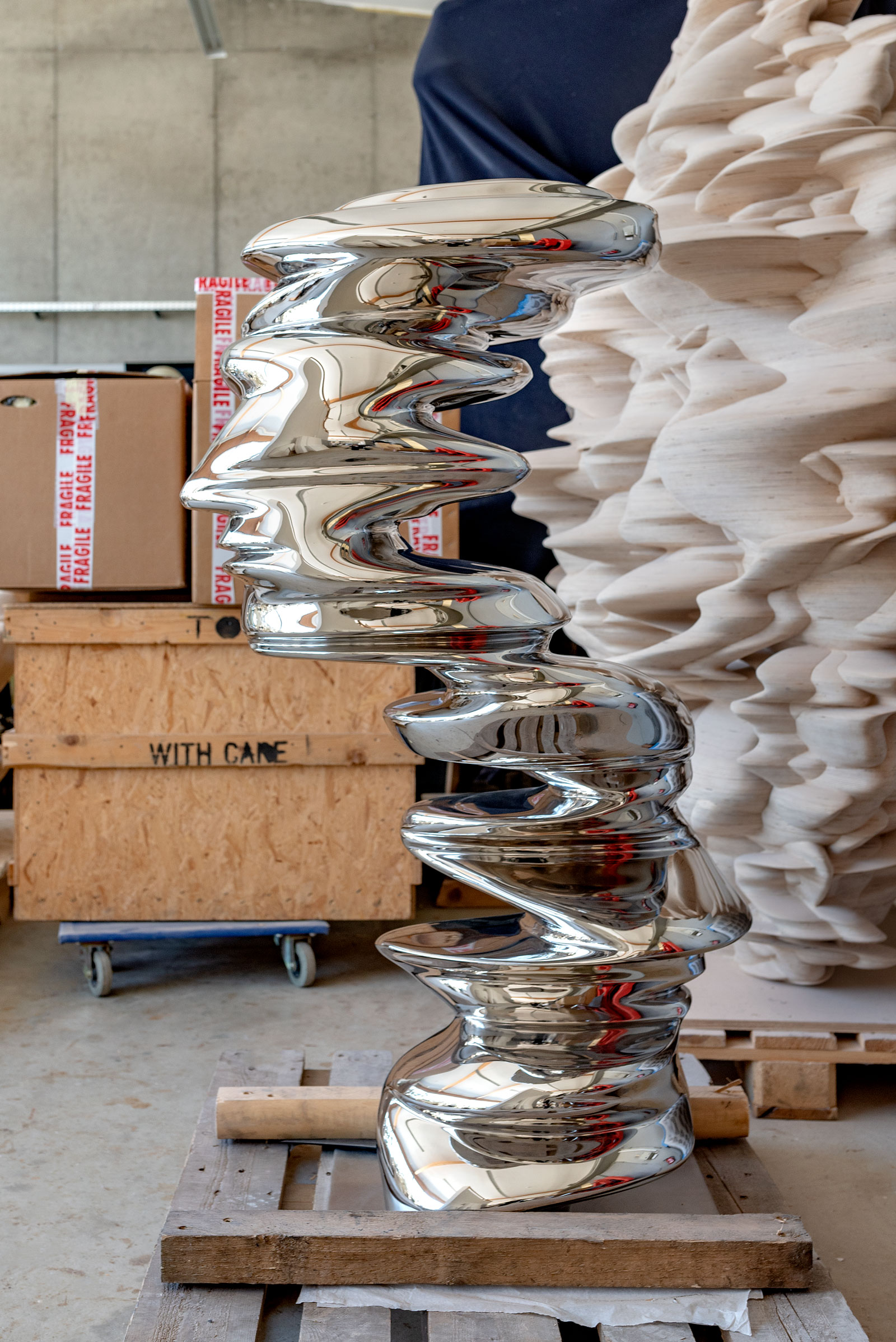Tony Cragg likes order. He likes to classify his sculptures, group them into families and think in terms of the relationships between those families. “I am very skeptical about throwing things at the wall and doing chance things, but art is full of this kind of sloppiness,” says Cragg in his studio overlooking the valley of Wuppertal. He stands next to his desk which is filled with drawings tracing human profiles. Amidst these rise elegantly, in a columnar fashion, what seem to be their physical projections. Cragg calls these sculptures, Rational Beings. Depending on your vantage point, human profiles fade in and out of abstraction. “I like to create the internal structure of things – the human figure is an organic form, but has many geometries: our organs, bone structure, cells and molecules. Then I like to vary this structure till it has an emotional effect on me.”

The studio is organized in workshops. One workshop is filled with hundreds of small circular and elliptical discs of plywood. Cragg picks one disc and illustrates the process of “fleshing out” a drawing. “We superimpose them along two axes. There is a straight axis in one plane and a bent axis in the other. The final form is glued together and covered with a skin. So you see it’s the underlying structure that gives the skin all the tension. This concept reflects the basic structure of many organisms, plants and animals.” I ask why plywood and not natural wood. “The reason I am so interested in plywood is that it’s a man-made material. Man-made materials are always inferior, so I try to give them another value, another quality.”






Polystyrene and polyurethane, as opposed to plywood, are lightweight materials that here become airy confections. “Traditionally it was difficult to make big sculptures, and polystyrene gave a certain generation of artists in the 50s and 60s easy-to-handle volumes.” With no effort, Cragg picks up a polyurethane sculpture from the ground and introduces it as his newest pursuit under the family name Hedges. “Every new adventure is about communicating emotion. It’s not about beauty because beauty is a very relative term. Henry James is sitting on a cliff in Northern Ireland watching a 10-meter wave crashing down on the rocks. He sees the beauty of the force of the ocean. And then he considers sitting at the bottom of the cliff and the wave coming to take his life away from him and realizes that’s incredibly ugly. That’s exactly how it is. Everything has a potential instantaneously and simultaneously to be beautiful and ugly depending on what position you take.” Holding and examining the rambling shape of Hedges, Cragg says that it was inspired by a dreamlike place from his childhood.
“I came from the South of England where the fields have hedges. The hedges are sometimes 8 meters wide with all sorts of plants, all sorts of animals, insects, and maybe even a river inside them. When I was a small boy, with my brothers and cousins I used to run through the hedges. The bluebells would come out, and it would be an entirely blue thing and sometimes the primroses.” Hedges will be a “mega work” and will be cast in brass. “We just have to find someone crazy enough to do it.”
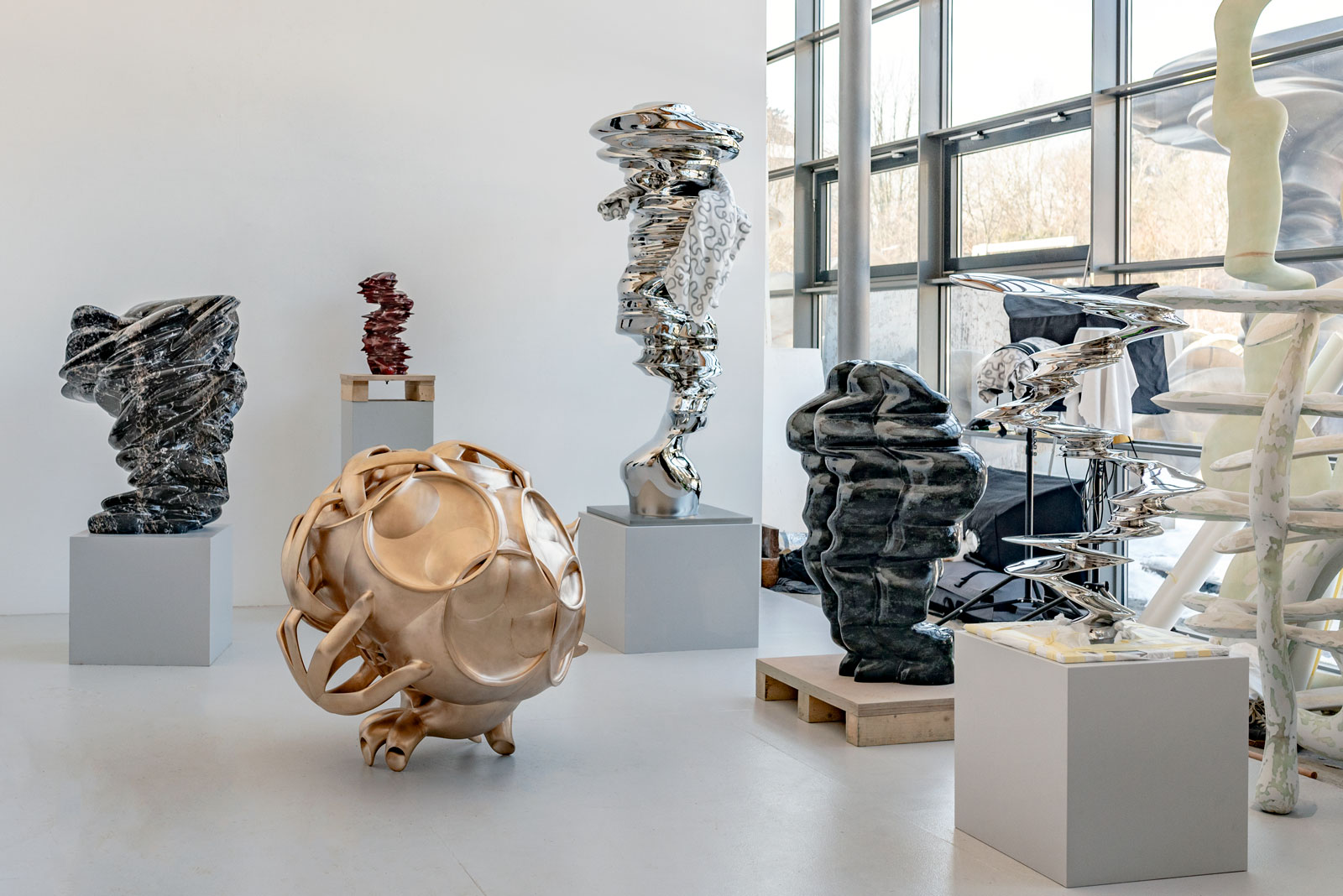
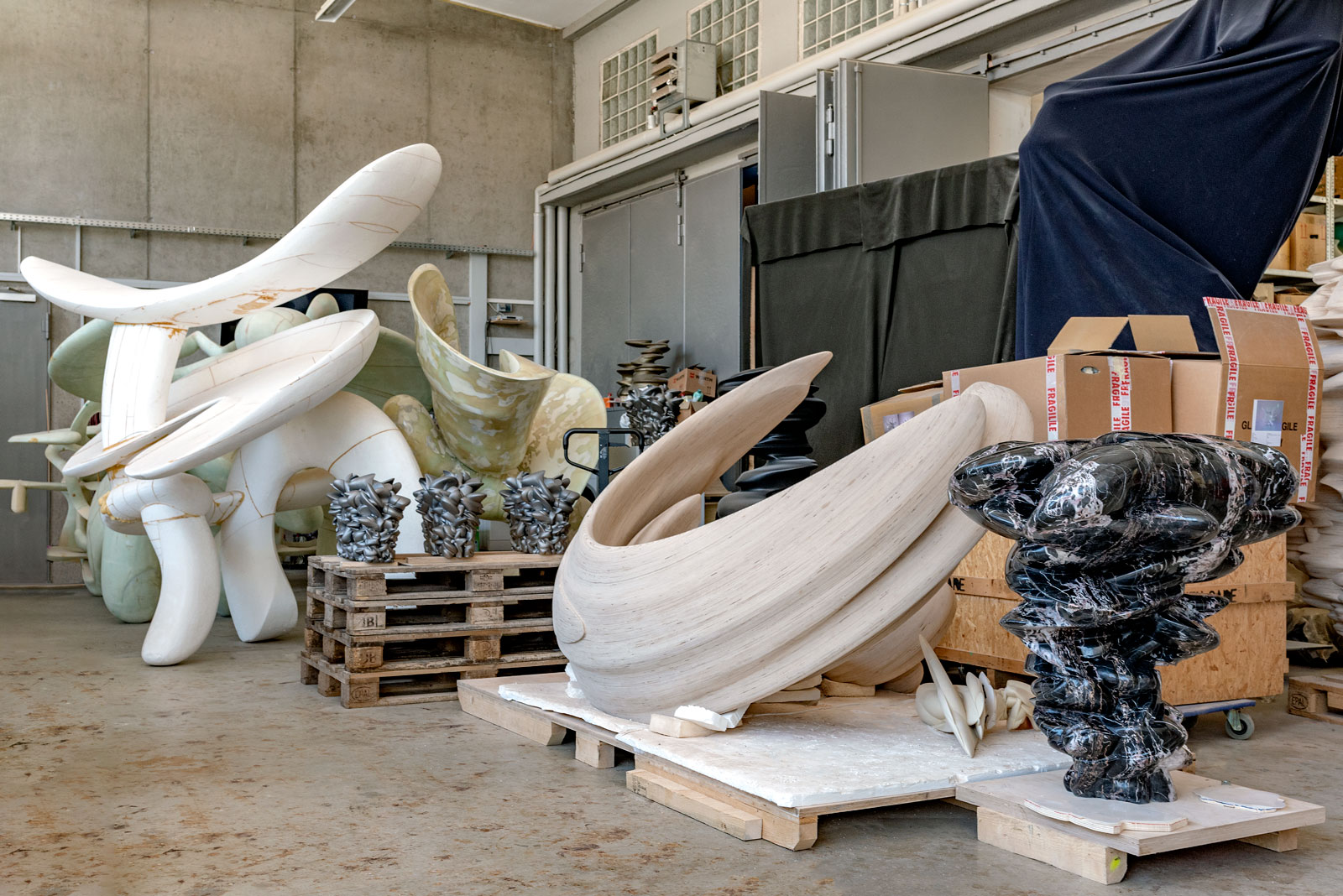
Every material calculates its own form.
Tony CraggFor outdoor sculpture, “you cut down to what you can use. Steal rusts, stone absorbs water and it freezes. Bronze has lasted over thousands of years. But using bronze is not an answer for all the works.” Engineers are now capable of making 3d digital models and performing stress tests to make sure that the sculptures can withstand strong winds. Does this advanced technology separate artist and work? “A sculptor would use the sharpest chisel he could get. We all use the best tools. Look at what polystyrene did for Jean Dubuffet or the enormous digital power that Andreas Gursky is using. Why not? You can’t ignore technology. But I still want to make things that I have an emotional relationship with. The computer has no psychology. It would make something and it wouldn’t mean a thing.” In the 80s everybody said “let it be made,” so Cragg tried outsourcing his production. “When the work came back from the manufacturer, I couldn’t understand how the thing got to be like it was. I believe in thinking with material. Now, I have to make everything in the studio.” Currently in the studio there are 32 works in the making including one for a private collector, “Initially we had designed it 3 meters high, but he wants it bigger. So we are making it bigger.”
Just then, the director of the Henry Moore Foundation arrives together with a large Henry Moore bronze. Like the sculpture, Cragg made a move from England to Germany. In 1977, shortly after graduating from the Royal College of Art he moved to Wuppertal to follow his first wife who was German. There through a chance acquaintance he was offered a position at the celebrated Kunstacademie in Dusseldorf, where Joseph Beuys and Gerhard Richter taught; in 1998 he became professor and director in 2009-2013. The sculpture’s move, however, may not be of such long duration. “They are lending me the sculpture for 10 years. It will look fantastic in the park.” The idea of the sculpture park was born when Cragg wanted to do a group show with some of his students’ works in the valley next to his studio, but could not get approval from the authorities and the farmers. So he decided to buy Villa Waldfrieden a 15-minute drive from his studio. “I was blown away with this place. I never imagined that this existed here.” On the property he built a glass gallery for temporary exhibitions, which also became the location of the Wim Wenders documentary film dedicated to the legendary choreographer Pina Bausch. In the surrounding forest many of his sculptures and a few younger artists’ sculptures have found a place in nature. The Henry Moore bronze will probably stand there as a flagship of those who influenced Cragg as he was coming of age. “That was the generation of Henry Moore and Barbara Hepworth; Anthony Caro, Phillip King and Kenneth Ermitage; Richard Long and Gilbert and George. The conflicts between those generations were very acute, almost violent and abusive. That’s why I became interested in sculpture. It seemed to be important.”

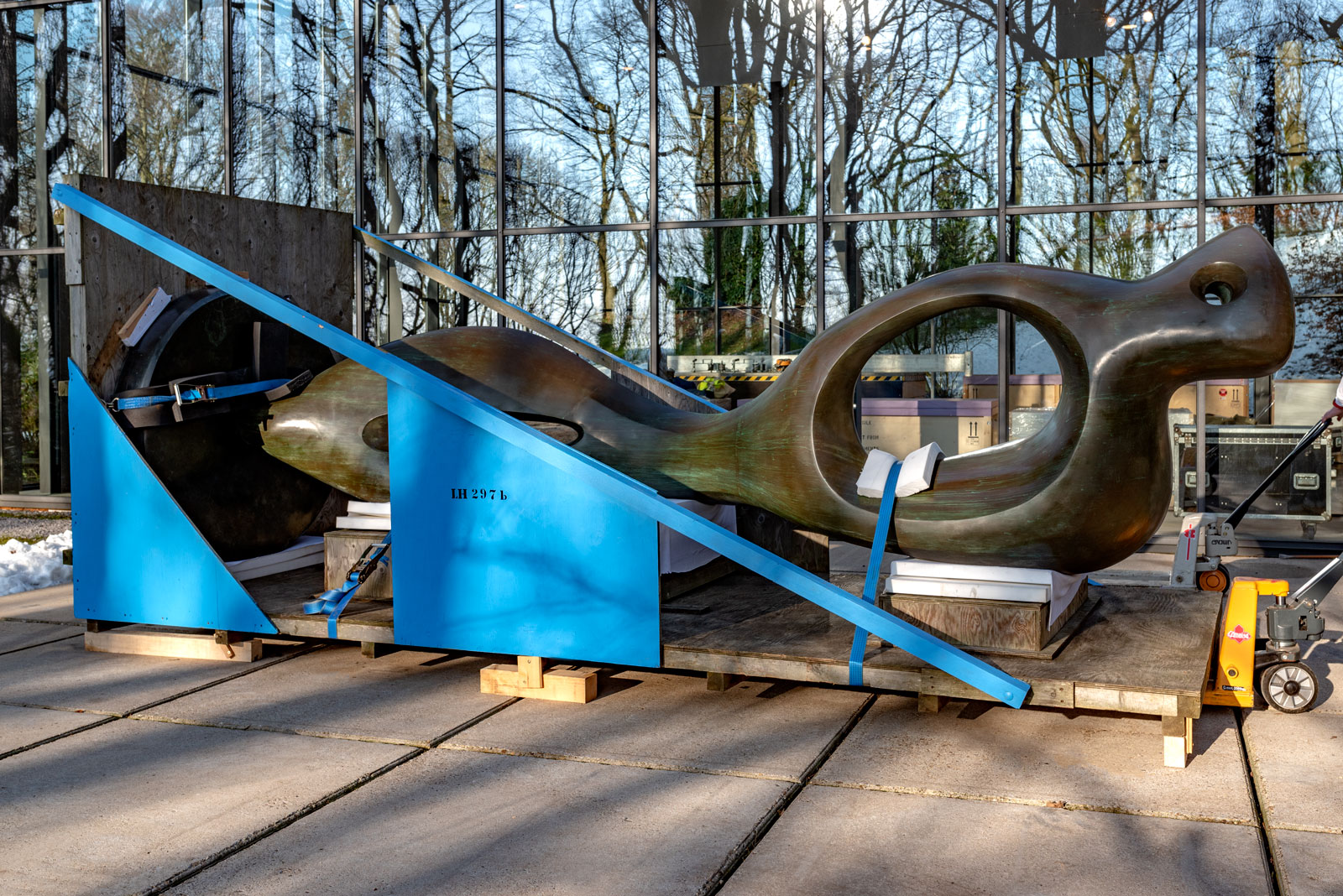

Wuppertal, 2016. All photographs and text © 2016 by Alexia Antsakli Vardinoyanni – www.artflyer.net
